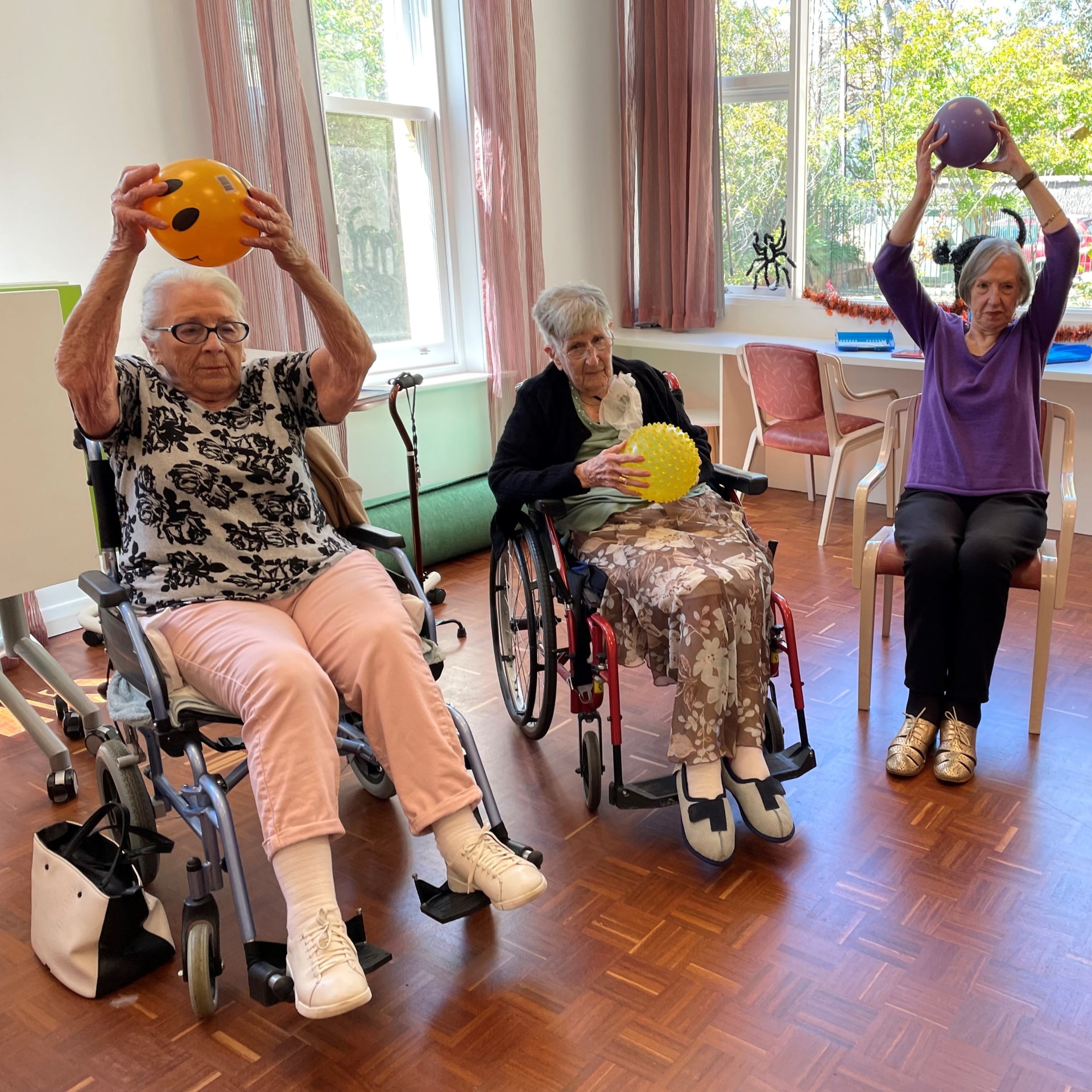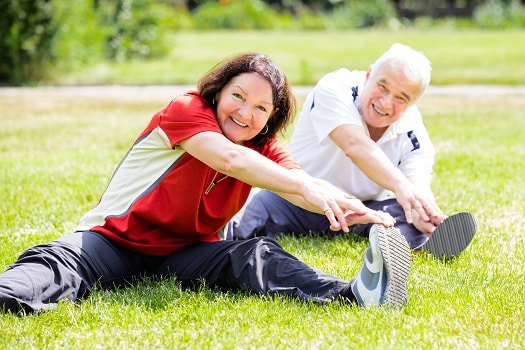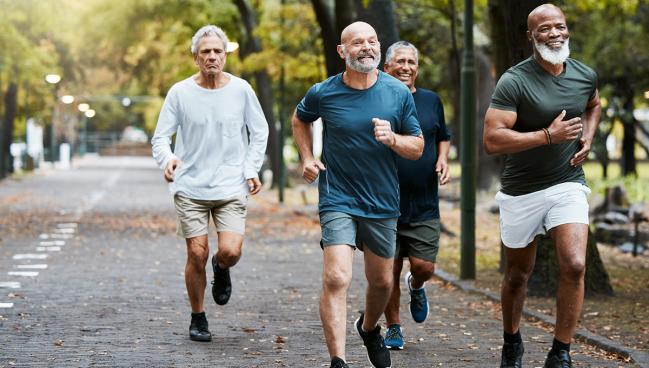6
Section One: The Fundamentals
A) Keywords
Exercise 1:
Provide a brief definition of one of the padlet keywords for this week.
| Master Athlete: This term typically refers to athletes who continue to compete in organized sports beyond a conventional “peak” age, often with age-based categories and modifications to rules or equipment. The concept of the master athlete highlights the social construction of age-related decline in sport and showcases the continued engagement, skill, and competitive spirit of older individuals.
|
B) The Social Significance of Aging in Sport
Exercise 2: Notebook Prompt
How is old age popularly represented today? Find an image online that you think exemplifies one defining attitude towards old age and paste in your notebook below with a brief explanation of what this image means to you.

To me, this image exemplifies an attitude of peaceful acceptance and quiet enjoyment in old age. It moves away from the often-stereotyped representations of old age as either a period of decline and frailty or one that needs to be constantly “fought” with anti-aging measures and extreme activity. Instead, it suggests a stage of life where there can be beauty and fulfillment in stillness, connection, and simply appreciating the world around you.
|
Exercise 3: Notebook Prompt
What does the article (referencing another study by Dionigi) mean by its statement that sport can help aging people to simultaneously “accept and resist the ageing process” (572)? Respond by audio or text and find paste two images sourced online into your notebook showing how sport might help aging people to both accept and resist the aging process.

Accepting the Aging Process: Sport can help individuals acknowledge and come to terms with the changes that occur with age, such as decreased physical abilities, changes in body composition, and the potential need for modified activities. Participating in age-appropriate sports, like masters athletics or adapted sports, allows people to continue engaging in physical activity while recognizing and respecting their bodies’ current capabilities.
Defying the Ageing Process: At the same time, sports can enable older people to actively fight against the detrimental impacts of ageing. Frequent exercise has been demonstrated to preserve bone density and muscular mass, improve cardiovascular health, improve cognitive function, and elevate mood. Older folks can defy the notion that they will inevitably deteriorate and preserve their physical vigour and control by continuing to play sports. |
Exercise 4: Notebook Prompt
Who are the groups less likely to have extensive opportunities to take part in sports, according to Pike? How does privilege factor into aging and sport? (200 words max)
|
the groups less likely to have extensive opportunities to take part in sports are:
Privilege factors into aging and sport by determining access to resources.
|
Exercise 5: Padlet Discussion
Why do you think age discrimination is “reported more than any form of prejudice” with older people presented as a threat to social values and interests? Feel welcome to use video in your responses. Paste your comments (or transcript of your video) below!
|
Age discrimination is often reported more frequently than other forms of prejudice because it remains deeply embedded and normalized within society. Unlike other forms of discrimination that have faced significant social pushback, ageism tends to remain socially acceptable, often portrayed subtly through media and institutional narratives. Older individuals are frequently presented as threats to economic stability, healthcare systems, and cultural norms, which fosters stereotypes of them as burdens rather than valued community members. In her influential TED Talk, Ashton Applewhite describes ageism as “prejudice against our future selves,” highlighting how society distances itself from aging by portraying older people as “other” or separate from productive society
|
B) Older Women and Sport
Exercise 6: Notebook Prompt
What differences do you see in these ads? Which one is more inclusive? How is age represented or not represented in each? Answer these questions in your notebook.
| While both ads promote inclusivity, “This Girl Can: Me Again” places a stronger emphasis on engaging underrepresented groups, particularly women who may feel alienated from traditional fitness narratives. It actively seeks to dismantle stereotypes and create a welcoming environment for women of all backgrounds.
Representation of Age:
|
Exercise 7: Notebook Prompt
In her article, “Assessing the sociology of sport: On age and ability,” Elizabeth Pike references a “trend towards a ‘feminisation of ageing’, with many women living longer than men” (573). Do you agree that aging has been “feminized” in this way? How? Answer these questions in your notebook.
|
Yes, I agree with Elizabeth Pike’s observation that aging has been “feminized,” primarily because demographic trends and social attitudes surrounding aging disproportionately impact women. Statistically, women generally live longer than men, meaning a larger proportion of the elderly population is female. This demographic shift creates social narratives and policies focused significantly around women’s experiences in older age. This feminization is reflected culturally and economically. Women often face compounded discrimination through ageism and sexism, where aging is socially stigmatized, particularly in relation to appearance and physical ability. For instance, the anti-aging beauty industry disproportionately targets women, reinforcing stereotypes that female value diminishes with age.
|
Section Three: Module Mini Assignment
1) Describing the ProblemThe 2024 redevelopment of Bonnerworth Park in Peterborough has ignited significant debate, primarily due to the city’s plan to invest $4.4 million in constructing 16 lighted pickleball courts, expanding parking facilities, and adding a specialized bike track. This initiative involves removing existing green spaces, including baseball diamonds and tennis courts, which has sparked opposition from local residents concerned about increased noise levels, environmental impacts, and a perceived lack of public consultation in the decision-making process. The controversy in Peterborough centers on the city’s decision to redevelop Bonnerworth Park by installing 16 lighted pickleball courts, along with expanded parking, at a cost of $4.4 million. This plan involves removing existing green spaces, including baseball diamonds and tennis courts, which has sparked significant opposition from local residents. Concerns raised include increased noise levels, environmental impacts due to loss of green space, and a perceived lack of public consultation in the decision-making process (Davis, 2024) The debate has been further intensified by discussions around municipal budget priorities, with some community members questioning the allocation of substantial funds to recreational projects amidst pressing issues like housing and social services .(Davis, 2024) 2) Representation of Older Pickleball Athletes and Neoliberal AgendasIn media and social media discussions, older pickleball enthusiasts are often portrayed through a dual lens. On one hand, they are seen as active, health-conscious individuals embracing a sport that promotes physical well-being and social engagement. This aligns with neoliberal ideals that emphasize personal responsibility for health and active aging. Such narratives suggest that by participating in pickleball, older adults are contributing positively to society by reducing potential healthcare burdens and embodying the virtues of self-care and productivity.(Pike, 2011) However, this portrayal can also obscure underlying ageist sentiments. Critics of the park redevelopment have sometimes depicted pickleball players as a privileged group whose interests are prioritized over broader community needs. For instance, some residents have expressed frustration that significant public funds are being allocated to facilities that primarily serve older, more affluent demographics, potentially at the expense of services for younger or more marginalized populations .(Anselmi, 2024) Elizabeth Pike’s analysis in “Assessing the Sociology of Sport: On Age and Ability” provides a framework for understanding these dynamics. She discusses how sport can both challenge and reinforce societal norms related to aging. In this case, while pickleball offers opportunities for older adults to remain active and socially connected, the surrounding discourse may inadvertently reinforce stereotypes that associate aging with decline or social exclusion, particularly when older athletes are portrayed as out of touch or self-serving in the context of community debates. Moreover, the emphasis on individual choice and market-driven solutions in promoting pickleball aligns with neoliberal agendas that prioritize personal responsibility over collective welfare. This perspective can marginalize those who lack access to such recreational opportunities, further entrenching social inequalities.
References:
|
https://ecampusontario.pressbooks.pub/3134notebook/wp-admin/admin-ajax.php?action=h5p_embed&id=47



Feedback/Errata